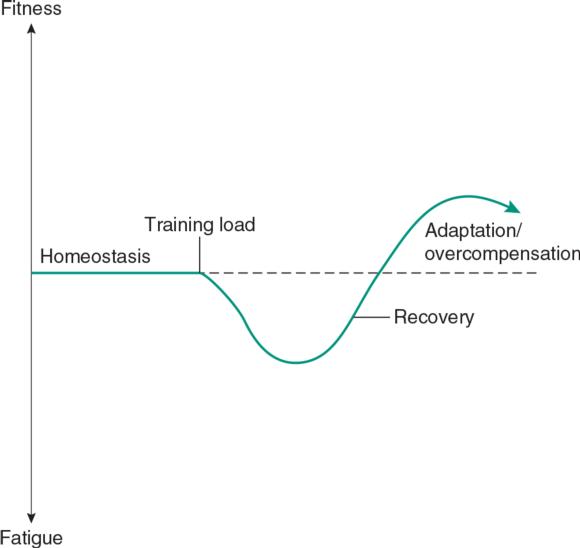Adaptation as the basis for weight training
This is an excerpt from Cycling Anatomy-2nd Edition by Shannon Sovndal.
Adaptation
The general adaptation syndrome (GAS) provides the fundamental construct for conditioning and weight training. Developed and published in 1950 (Selye 1950), it remains a fundamental paradigm today. I recommend reading the original article. The GAS is made up of three phases: alarm reaction, adaptation, and exhaustion. The human body likes to maintain homeostasis. It constantly works to resist change and remain at rest. Every time the body experiences a new stress—such as a longer-than-normal bike ride or weightlifting—the body becomes “alarmed.” The stressor disturbs the natural homeostasis and moves the body out of its comfort zone. Phase 2 occurs when the body tries to mitigate the stress by adapting to it. The body will reach a new, higher level of homeostasis as a result of the adaptation. Ideally, as you train, you'll repeat phases 1 and 2 to continually improve your level of strength and fitness (figure 2.1).

Figure 2.1 General adaptation syndrome. Your body is initially in a state of homeostasis. An alarm reaction or training load induces a level of fatigue. Your body responds to the stress, first through recovery and then adaptation.
Reprinted by permission from S. Sovndal, Fitness Cycling (Champaign, IL: Human Kinetics, 2013), 9.
If you overdo it, however, you may overwhelm your body's adaptive abilities. This will cause you to reach the third phase of the GAS: exhaustion. You'll find that your training is a fine balance of stress and recovery. I like using the analogy of roasting marshmallows at a campfire. I learned this from my good friend and founder of Skratch Labs, Dr. Allen Lim. Applying stimulus is like heat to the marshmallow. The right amount of heat and the marshmallow becomes soft, brown and delicious. Too much heat, like overtraining, and the marshmallow begins to burn (figure 2.2).
Looking at this model—alarm reaction, adaptation, and exhaustion—you can see the importance of the RACE training philosophy. You need rest to avoid overtraining and exhaustion. Only by being accountable and consistent can you have adaptation through your training. Be sure to allow yourself adequate rest between workouts. Remember, adaptation and conditioning come while you are resting and recovering, not while you are working out.
Periodization (figure 2.3) is another key training concept that goes hand in hand with the GAS. All training should be based on a well-planned, systematic, and stepwise approach that involves training cycles or blocks being built one on top of the other. This hierarchical structure continually builds on previous gains while giving the body time to adapt and condition. A good periodization program will enable you to avoid overtraining and to continually increase your fitness level. Think of the periodization program as the big picture of your training. The program will help you work toward particular points in time when you want to be at peak fitness. The training blocks can vary in length, but they will usually range between two and four weeks. As you use this book to plan your various workouts, you should choose different exercises during each block in an effort to continually “alarm” your system. This is the best way to improve your strength and conditioning.


Get the latest insights with regular newsletters, plus periodic product information and special insider offers.
JOIN NOW
Latest Posts
- Authenticity was key to McKinney’s NIL success
- AI—A new tool for sport PR pros
- Essential skills for sport PR practitioners
- Employ these tactics when pitching a story to the media
- How does ergonomic analysis and intervention enhance safety and reduce injury risk?
- Common movement patterns in competitive cycling


